“Baking with gums?” you say. “Why bake with GUM!??”
Good questions. I’m glad you asked.
You may have heard of these odd “gum” ingredients and wonder about them: is xanthan gum necessary in gluten free baking? And what is xanthan gum made of? Is xanthan gum safe and are there substitutes for xanthan gum in gluten free baking? What is guar gum? Can it be used instead of xanthan gum?
Another similar ingredient is psyllium husk. People ask me all the time what does psyllium husk do in gluten free baking?! {Especially if you’ve seen it listed in products like Metamucil, you may be surprised to see it in a gluten free recipe!}
If you’re wondering the same thing, you’ve come to the right place!

Gluten Free Baking with Gums
We gluten free bakers have to know all about these mysterious “gums” because they help to do the job of gluten in our gluten free recipes. I know it sounds peculiar, but it’s really just a lesson in baking chemistry.
No individual gluten-free flour can replace wheat flour on its own, so we bakers blend several together to mimic wheat’s qualities. One of the trickiest wheat flour attributes to replicate is its stickiness: its gluten holds food together, and without something to replace it, most gluten free recipes wind up a crumbly mess.
That’s where xanthan gum and guar gum and other ingredients like psyllium husk come in.
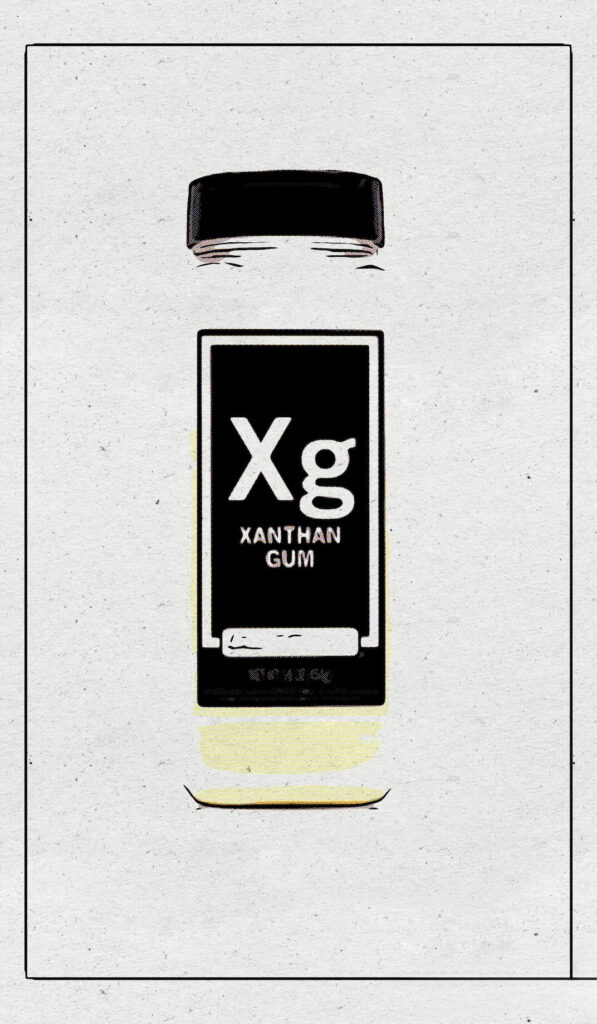
Xanthan Gum (zan-than)
Xanthan gum is a safe and widely used food additive is most often used to stand in for the glue-like qualities of gluten. You might have also noticed xanthan gum on ingredient labels of other foods like ice cream, salad dressing, gravies and even toothpaste.
Xanthan gum is a natural soluble fiber carbohydrate that is produced by fermenting a microorganism (Xanthomonas campestris, in case you need to know) with sugar, derived from corn, soy, dairy or wheat (after processing, no residue or proteins from the original food remains in xanthan gum, however those with severe allergies should determine the growing medium and make their own choice).

Xanthan gum is valued because it helps to keep oil and water mixed (hence its benefit in dressings) and also provides binding structure to hold carbon dioxide bubbles inside the food as it is cooking, keeping products like gluten-free bread from falling when removed from the oven.
It’s considered totally food safe and in face is considered to be a prebiotic soluble fiber that feeds the beneficial bacteria in your gut. In higher quantities, it can increase the levels of fluid in the intestine and stimulate the movement of food in the gut, promoting softer, bulkier stools; it may even may slow the absorption of sugar from the digestive tract enough to improve satiety.
Xanthan gum is pricey – luckily, we only need a pinch in gluten-free recipes (see chart below). Typically, xanthan gum makes up only 0.05-0.35% of a dry mixture.
Note: I’ve already added just the right amount of xanthan gum to my award-winning gfJules Flour and baking mixes, making it super easy for you!
Do NOT add any additional gums or psyllium husk to any of my recipes or mixes unless specifically noted in my recipes. The specific blends of specialty gluten free flours I use actually allow me to use very little gums at all in my products, comparatively, so if you add more, it may lead to gummy results.
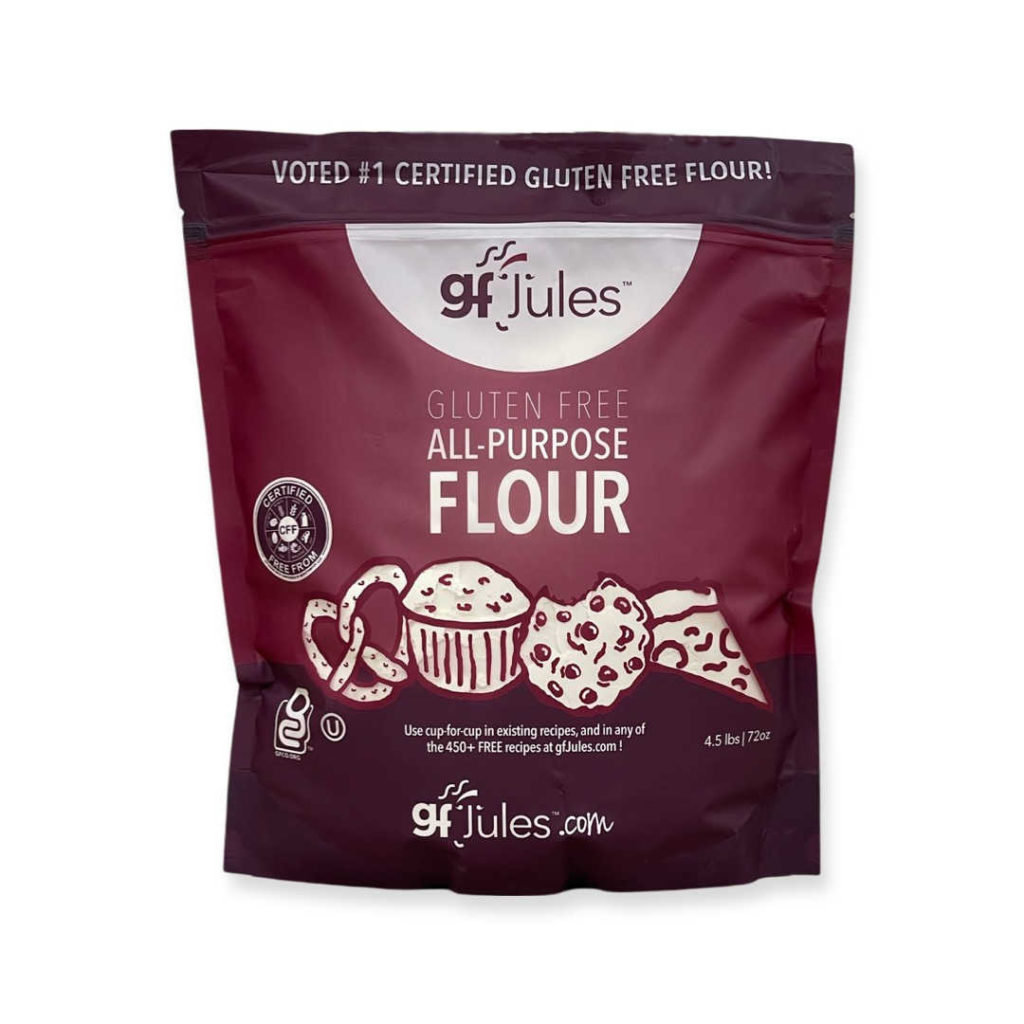
Guar Gum
Another option is Guar Gum – a powder derived from the seeds of legumes (guar beans) that can add a gumminess to gluten-free baked goods if used out of proportion.
It also has laxative properties, and some find that they are sensitive to it, or even feel especially full from eating products containing guar gum. I find that guar works best in cake recipes, but see the chart below for recommended amounts.
If your all purpose gluten-free flour does not already contain a gum, use this chart as a guide to how much to add in a given type of recipe. If your all purpose gluten-free flour already contains gums, then they have been added in the appropriate general purpose amount — do NOT add more gum – more is not better here! Adding too much gum to your recipe can make it gummy (go figure!).

Psyllium Husk Powder
Psyllium is a natural fiber derived from a shrub called Plantago ovato. Thus outer casings (or husk) of the seeds are ground into powder which, when added to liquids, becomes gelatinous and helps baked goods retain moisture.
Its ordinary use is as a colon cleanser, but when used in small amounts (2-4 tablespoons), it can offer binding properties in gluten free baking without the tummy upset. These binding properties may work to replace the gluten in gluten free recipes — particularly breads — and can also replace eggs in vegan baking.
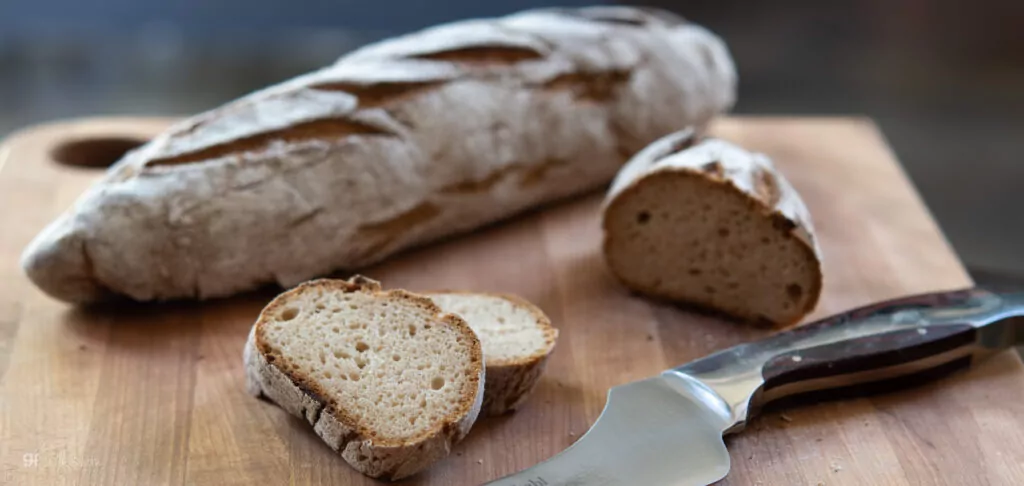
Purchase psyllium in whole husk or powder, but the two are not equivalent; do add powder if a recipe calls for powder, not husk. If a recipe calls for xanthan gum, you may substitute up to 2 tablespoons of psyllium powder for every 1 teaspoon of xanthan gum, depending on the type of recipe.
Psyllium husk powder tends to work best in yeast applications like breads and pizza, as well as in homemade pasta recipes. For more information on using psyllium husk or powder in yeast breads, consult this article from my friend Annalise Roberts.
Gelatin
You’ve probably made Jell-O before, or used Knox unflavored gelatin. Gelatin has amazing binding properties and can make a good replacement for gluten in certain applications. Use the amount called for in any given baking recipe, and add in with the dry ingredients, but don’t use Jell-O for baking. Use one which specifies it’s made for baking like this one linked here.
It is NOT vegan or vegetarian, as gelatin is made from animal bones, hooves and connective tissue. There are some products which are called gelatin and are labeled “vegetarian” or “kosher.” See “pectin,” below.
Pectin
A vegetarian substitute for gelatin is Pectin. Unlike traditional gelatin, pectin is derived from the peels of apples, plums, cranberries and other citrus.
Like gelatin, it can tenderize breads and add stability to baked goods, as well. Add pectin powder with dry ingredients in baking recipes.
Agar Agar
Another vegan alternative to gelatin, Agar Agar is a flavorless combination of dried algae that can be substituted in equal amounts where recipes call for gelatin. Agar agar is used to thicken, gel, stabilize and texturize baked goods, sauces, dressings and some beverages.
It comes in powders, flakes, sheets and bars (1 bar equals 4 Tablespoons of flakes or 2 Tablespoons of powder). Generally, 1 Tablespoon agar agar flakes OR 1 teaspoon agar agar powder will thicken 1 cup of liquid. For baking, add with dry ingredients; 1 teaspoon to 1-2 cups of dry ingredients.
Konjac Powder
Konjac powder is made from the konjac root grown in Asia. It has incredible thickening and water absorption properties in baking and must be added slowly to liquids or added in together with the dry ingredients in a recipe. It is also known as Glucomannan powder.
Other options to consider for binding: Mung Bean Flour, Pre-Gelled Potato Flour, new Flaxseed Meal or Chia Seed (ground); Modified Tapioca Starch.
Do you still have questions about baking with gums? Is there a gum or a blend with gums you prefer? Leave your comment below!
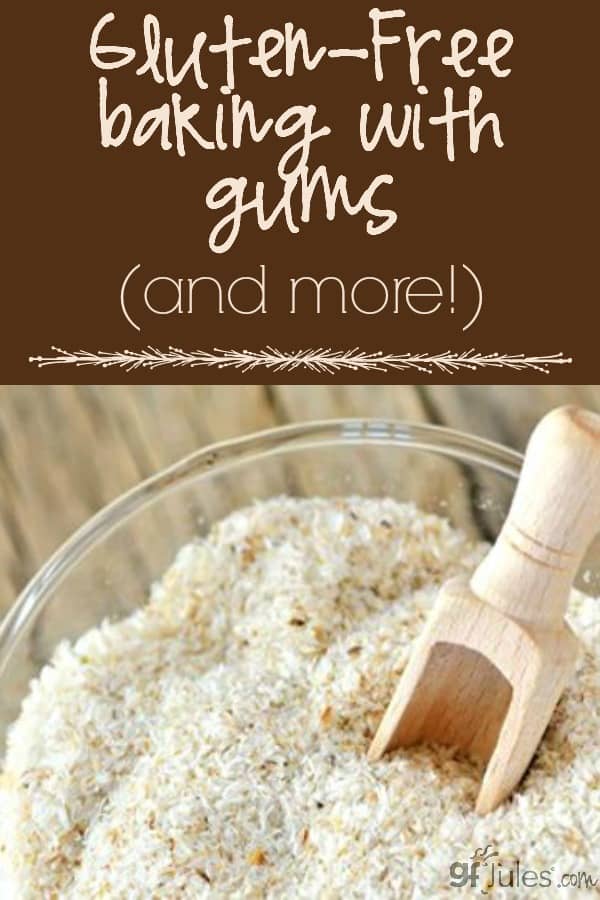


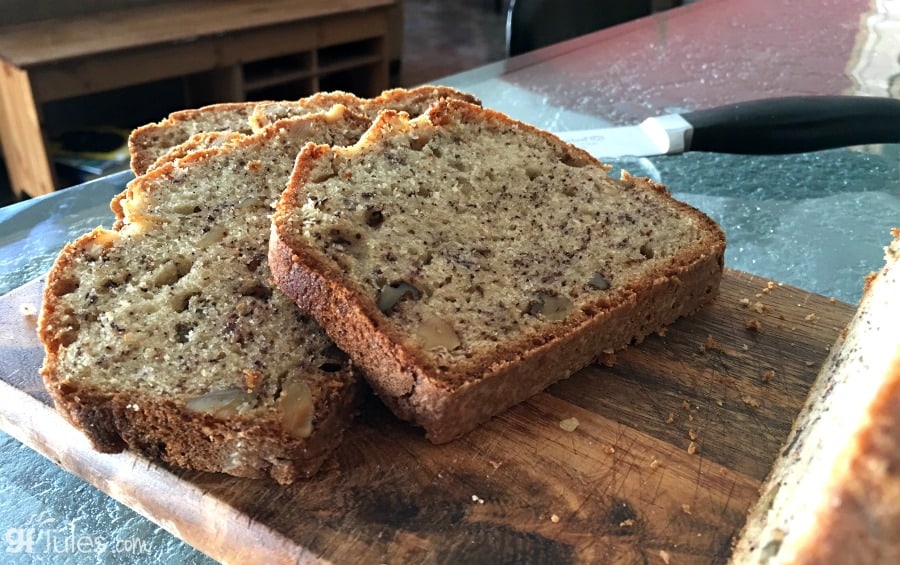
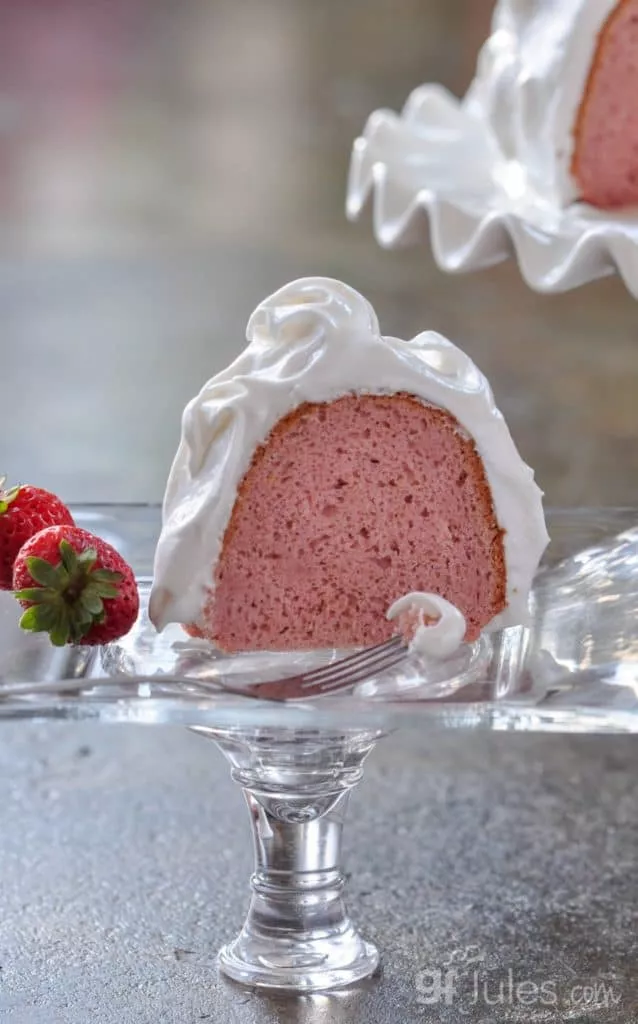























Something you did not mention is that these various hrdrocolloid gums, used individually, are primarily thickeners. Certainly, gluten can be used as a thickener also. But, a single gum added in larger quantities doesn’t become the gluey doughy consistency of a lot of gluten. What you want in a dough ball is a stretchy consistency…and you can get that with various combinations of gums used together…xanthan & guar, locust bean & K-carrageenan, K & I carrageenans, xanthan & glucomannan, etc. Not all combos have this “1+1=3” gelling boost. For example, guar and agar. But, agar & pectin works. It takes some trial & error and, often, the stretchiest gel is obtained with other than 50-50 ratios of the 2 gels. But, you will find that the total amount of the 2 gels needed for a certain result will be less than what would be needed if using either one separately.
psyllium husk Usually used in baking items.
Question; Does your flour have xanthan gum already in the mixture? I’d greatly appreciate a quick response! I’m going to visit my gluten-free granddaughter and want to bake with her this coming weekend.
Thank you so much!
Trish
Hi Trish, yes! My gfJules Flour contains xanthan gum and you never need to add any to recipes. In fact, please don’t! Here’s a link to my gfJules Flour where you can read all about the flour, the ingredients and information on how to use it as the 1:1 flour it is in all your recipes. I hope you have a wonderful visit with your granddaughter! In the future if you have a time sensitive question, you can always email Support@gfJules.com or use the phone icon at the top of ever page to reach us!
~jules
recipes call for potato flakes. I can not find potato flakes, only instant mashed potatoes. Is this the same think and OK to use?
Hi, Nanchy, yes potato flakes and instant mashed potatoes (plain!) are the same. You should be good to go if you can find those!
~jules
Hi and thank you for the article. Can oat fiber, alone or in combination with flax seed meal, be used in gluten free sourdough breads without the addition of any of the binders you listed here? Thank you!
Hi Mila, great question but I’m afraid I don’t have the answer for you since I haven’t tried it myself. I don’t want to steer you wrong. It’s worth a try, but I don’t want to promise there won’t be other modifications that would also need to be made if you’re subbing for all the other binders entirely. The psyllium husk fiber, in particular, is key to helping the structure in this bread made without gluten, and the oat fiber will help, but I’m not sure it will do it all on its own. Please let me know if you do try it and how it works out so that others can learn from your experimenting as well!
Happy bread baking!
~jules
This would be much more helpful if substitution ratios were given!
Hi julies 😊. Thanks for the information. Quick question : You said that If a recipe calls for 1 teaspoon of xanthan gum we should use up to 2 to 3 tablespoons of psyllium powder. But what is the recipe calls for 1 tsp Of guar gum ? Thanks In advance